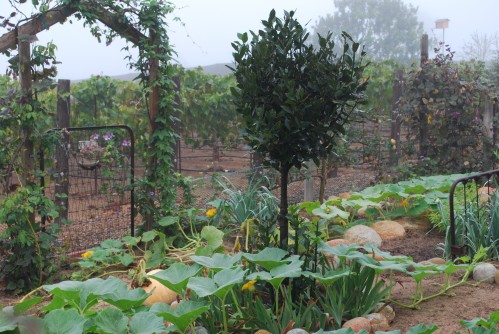 Everyone should have a Bay Laurel Tree in your garden, if you are in zones 5-9, and 12-24. There are as many uses for this tree and its green glossy aromatic leaves, as its many names. The names Bay/Sweet Bay/Laurel, Laurus nobilis are all the same tree. Sweet Bay is currently enjoying recognition as the 2009 Herb of the Year, as chosen by, The International Herb Association.
Everyone should have a Bay Laurel Tree in your garden, if you are in zones 5-9, and 12-24. There are as many uses for this tree and its green glossy aromatic leaves, as its many names. The names Bay/Sweet Bay/Laurel, Laurus nobilis are all the same tree. Sweet Bay is currently enjoying recognition as the 2009 Herb of the Year, as chosen by, The International Herb Association.
The Bay Laurel Tree is a Mediterranean evergreen shrub or tree. It is a slow grower but eventually can reach 12-40 feet in height. Fortunately, it responds well to trimming and can be shaped into a desirable topiary form. A few years ago in my potager, or kitchen garden I planted a Bay Laurel Tree in the center and as a focal point. I have shaped it into a sphere on top, and am presently shaping a smaller lower sphere closer to the ground. Bay Laurel trees take full sun or partial shade and appreciate moderate water.
Bay Laurel leaves are really desirable for decorative use in a wreath or crown, and as a culinary use in many types of recipes, and the well-known "bouquet garni". It also has household, cosmetic, aromatic, and medicinal uses.
"Bouquet Garni" is a french term for a bouquet of fresh herbs, tied together with kitchen string, and generally allowed to dry before steeping in stews, soups, sauces, stock, marinades, and the like. Typically, fresh herbs are rolled together using parsley, thyme, and flanked by bay leaves.
Karen England, Edgehill Herb Farm, is a recognized herb expert, garden speaker, and teacher of herb-related cooking classes in the San Diego area. She spoke to The San Diego Horticulture Society this past summer on Bay Laurel, and in a hand-out shared these adapted instructions for creating a bay wreath.
Make Your Own Laurel Bay Wreath Supplies Needed: Fresh bay branches, wreath form, paddle wire (available at craft stores), clippers, and optional ribbon.
Directions: With clippers, cut bay branches into lots of approximately of 3-4" sprigs. Using the wire, attach securely the sprigs to the wreath form. How much bay you will need depends on the type and size of the form you have chosen. Hanging Tip: Dry the finished wreath flat on a table for a week or so before hanging. This will prevent your wreath from drooping and drying lopsided.
Use: These completed wreaths can be hung as a decoration in a room or on a door, used for culinary purposes dried, or even as a fresh "laurel crown" on your head, just in time for Halloween. You could also make a garland swag of Bay Laurel using a length of stiff straight wire.
Please note, all laurels except the Bay/Sweet Bay/Laurel are poisonous. Make sure you identify the correct Bay Laurel Tree.
Please add your thoughts on Bay Laurel? Do you have a tree in your garden? What are your favorite uses? Have you ever seen a freshly made verdant bay wreath?

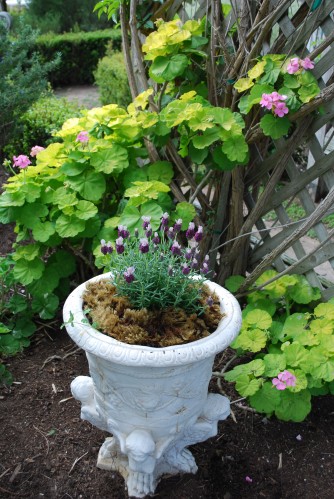
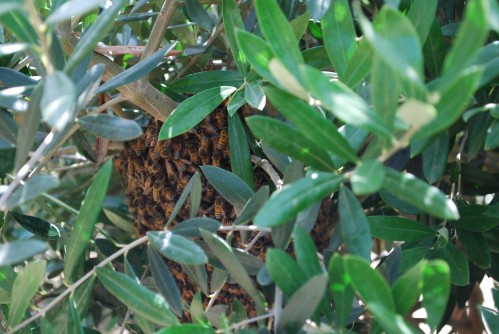 I know that nothing is a coincidence. Just last week I experienced my second honey bee swarming. The first one was in a friend's backyard a few years ago, and the second one was last week, close to our vineyard by the "Little Ollie" olive trees. At first I noticed a tiny dense dark cloud moving above our vineyard, with motion and fervor. Following this sight with my eyes for a while, it dawned on me that it was a swarm of honey bees. Upon further investigation and with the mission to water our "Little Ollie" olive trees, I spotted the swarm, quiet and resting under one of the branches. I wasn't afraid of them, and knew that they would be soon travelling on.
I know that nothing is a coincidence. Just last week I experienced my second honey bee swarming. The first one was in a friend's backyard a few years ago, and the second one was last week, close to our vineyard by the "Little Ollie" olive trees. At first I noticed a tiny dense dark cloud moving above our vineyard, with motion and fervor. Following this sight with my eyes for a while, it dawned on me that it was a swarm of honey bees. Upon further investigation and with the mission to water our "Little Ollie" olive trees, I spotted the swarm, quiet and resting under one of the branches. I wasn't afraid of them, and knew that they would be soon travelling on. Does your mom live a "stone's throw" away from you? Are you able to make her and all of your loved ones a delightful Mother's Day Brunch celebrating "her day" with your fresh eggs, delicately poached over heart-shaped polenta, melon-drizzled vinaigrette over arugula greens, blue cheese, and proscuitto, and gloriously ending with fresh berries and sour cream coffeecake? No, does she live out-of-state like my mom? Well, here is a great suggestion.
Does your mom live a "stone's throw" away from you? Are you able to make her and all of your loved ones a delightful Mother's Day Brunch celebrating "her day" with your fresh eggs, delicately poached over heart-shaped polenta, melon-drizzled vinaigrette over arugula greens, blue cheese, and proscuitto, and gloriously ending with fresh berries and sour cream coffeecake? No, does she live out-of-state like my mom? Well, here is a great suggestion.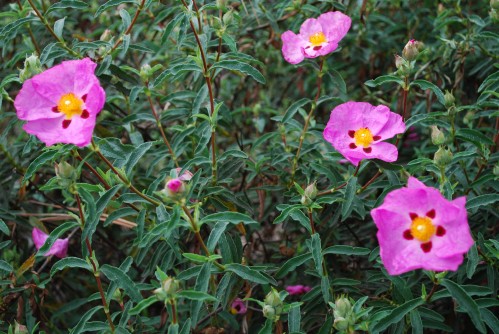 This is another spring blooming delight, Orchid Rockrose, Cistus x purpureus. Although this is a native Mediterranean drought tolerant shrub, something about it reminds me of an English country garden.
This is another spring blooming delight, Orchid Rockrose, Cistus x purpureus. Although this is a native Mediterranean drought tolerant shrub, something about it reminds me of an English country garden. 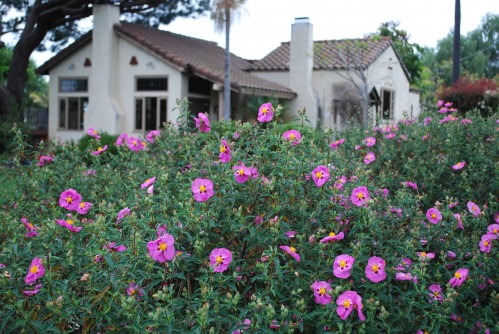
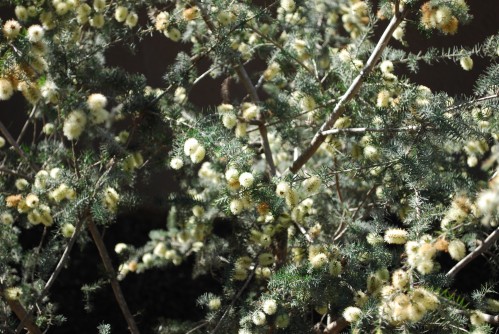 I wanted to write about the Grey Honey Myrtle tree, because it is one of my stellar nursery choices, of the last two years. You know the ones. They catch your eye in their generic container. You have an inkling they could look nice in your garden or yard. You take them home, plant them, and you all settle in. Presto, you wonder how you ever lived without them. They do something incredible and unknown to you, such as a totally unanticipated explosion of color. Yes, it is a big deal, because there are many more lackluster nursery choices that seem to fizzle, and all with good intentions. Has this happened to you?
I wanted to write about the Grey Honey Myrtle tree, because it is one of my stellar nursery choices, of the last two years. You know the ones. They catch your eye in their generic container. You have an inkling they could look nice in your garden or yard. You take them home, plant them, and you all settle in. Presto, you wonder how you ever lived without them. They do something incredible and unknown to you, such as a totally unanticipated explosion of color. Yes, it is a big deal, because there are many more lackluster nursery choices that seem to fizzle, and all with good intentions. Has this happened to you?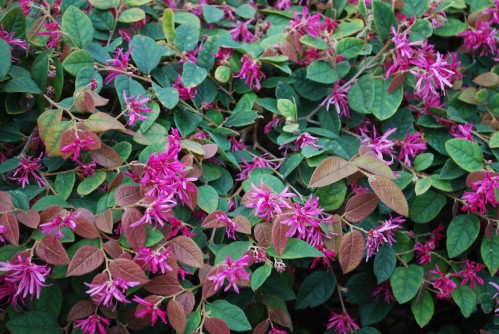
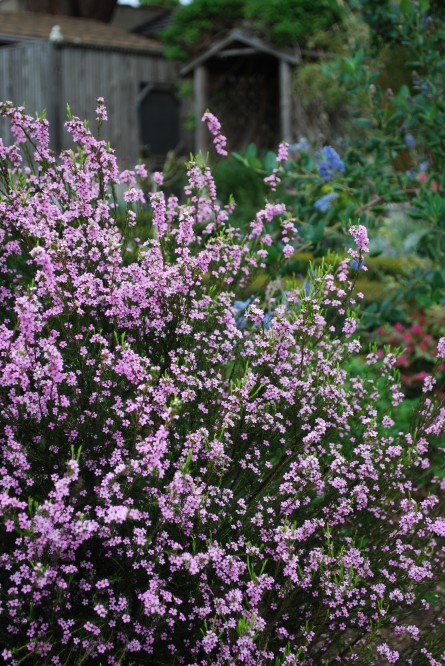 How can you not love a plant called "Pink Breath of Heaven". This shrub originally from South Africa, explodes into bloom winter to spring, with showy pink delicate tiny flowers on wispy feather-like branches. I feel like it is my own personal "trumpeter" in the garden, announcing the beginning of spring.
How can you not love a plant called "Pink Breath of Heaven". This shrub originally from South Africa, explodes into bloom winter to spring, with showy pink delicate tiny flowers on wispy feather-like branches. I feel like it is my own personal "trumpeter" in the garden, announcing the beginning of spring.